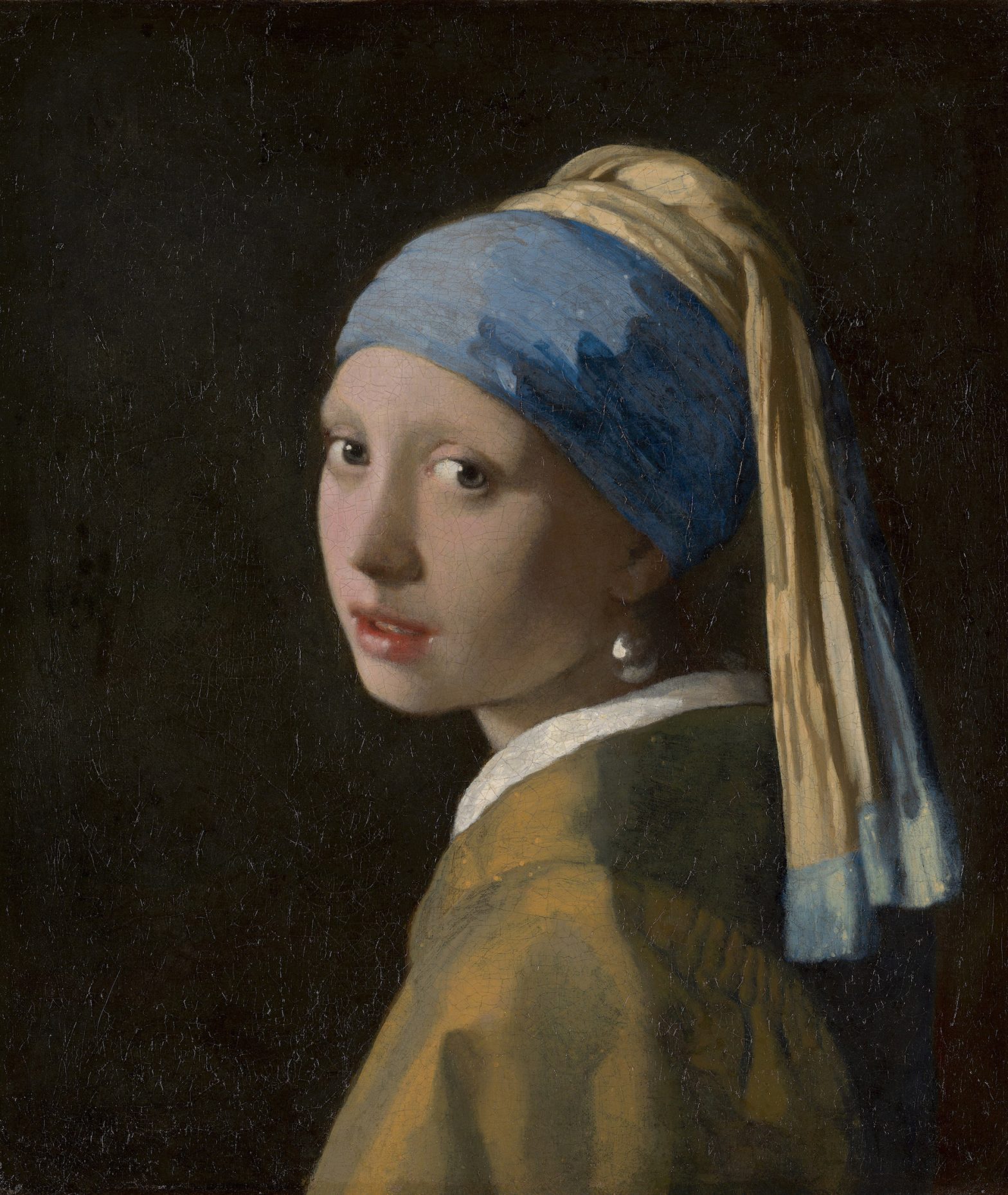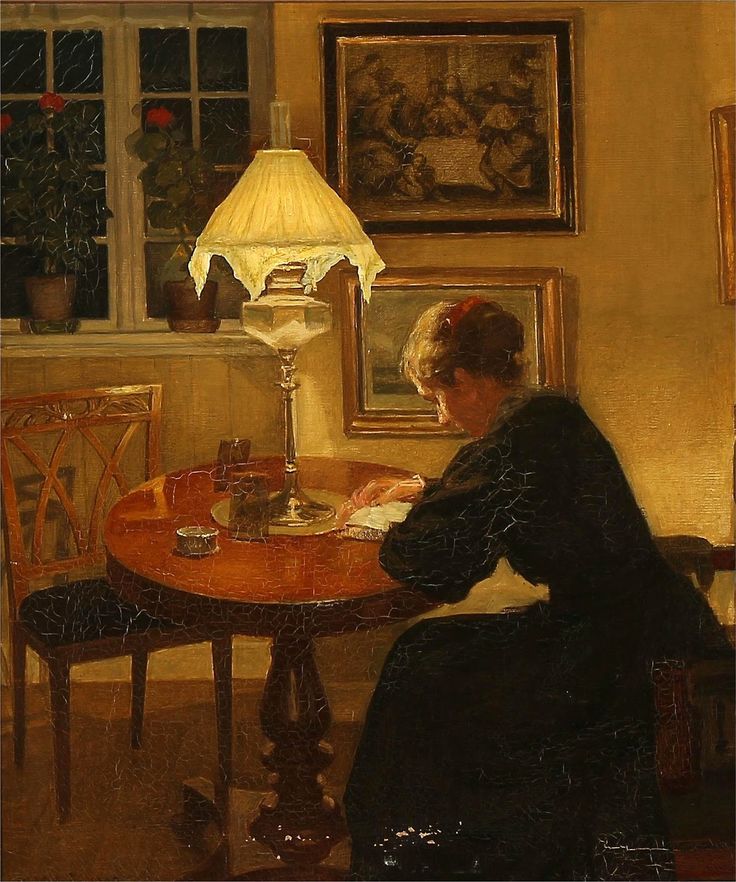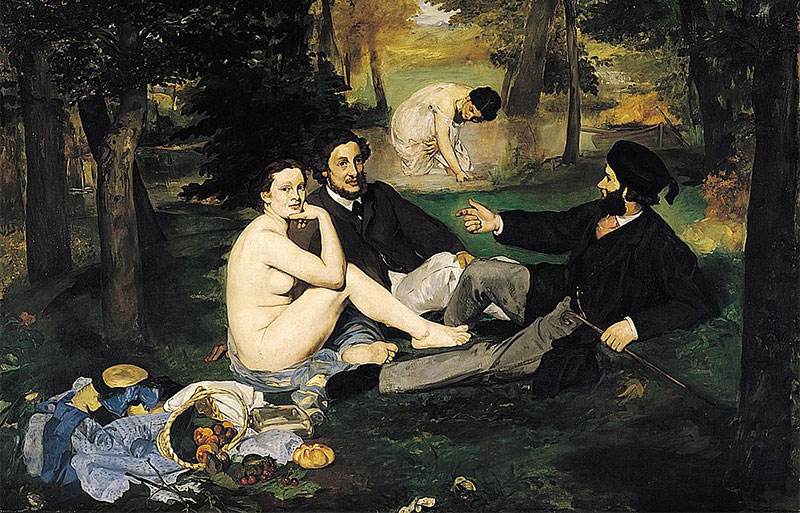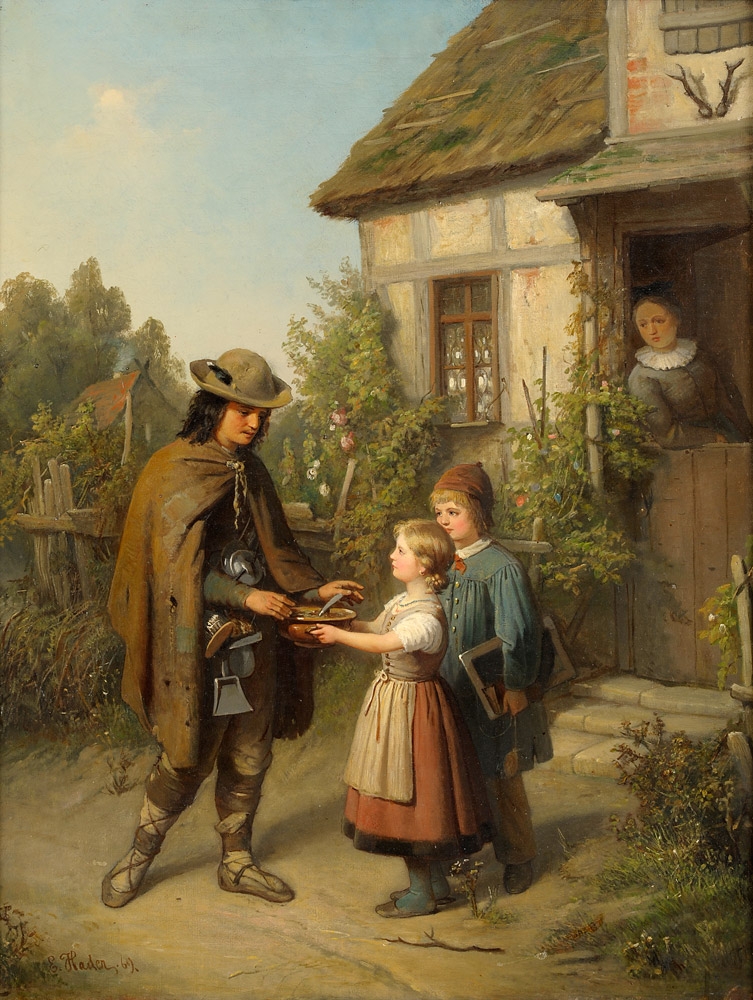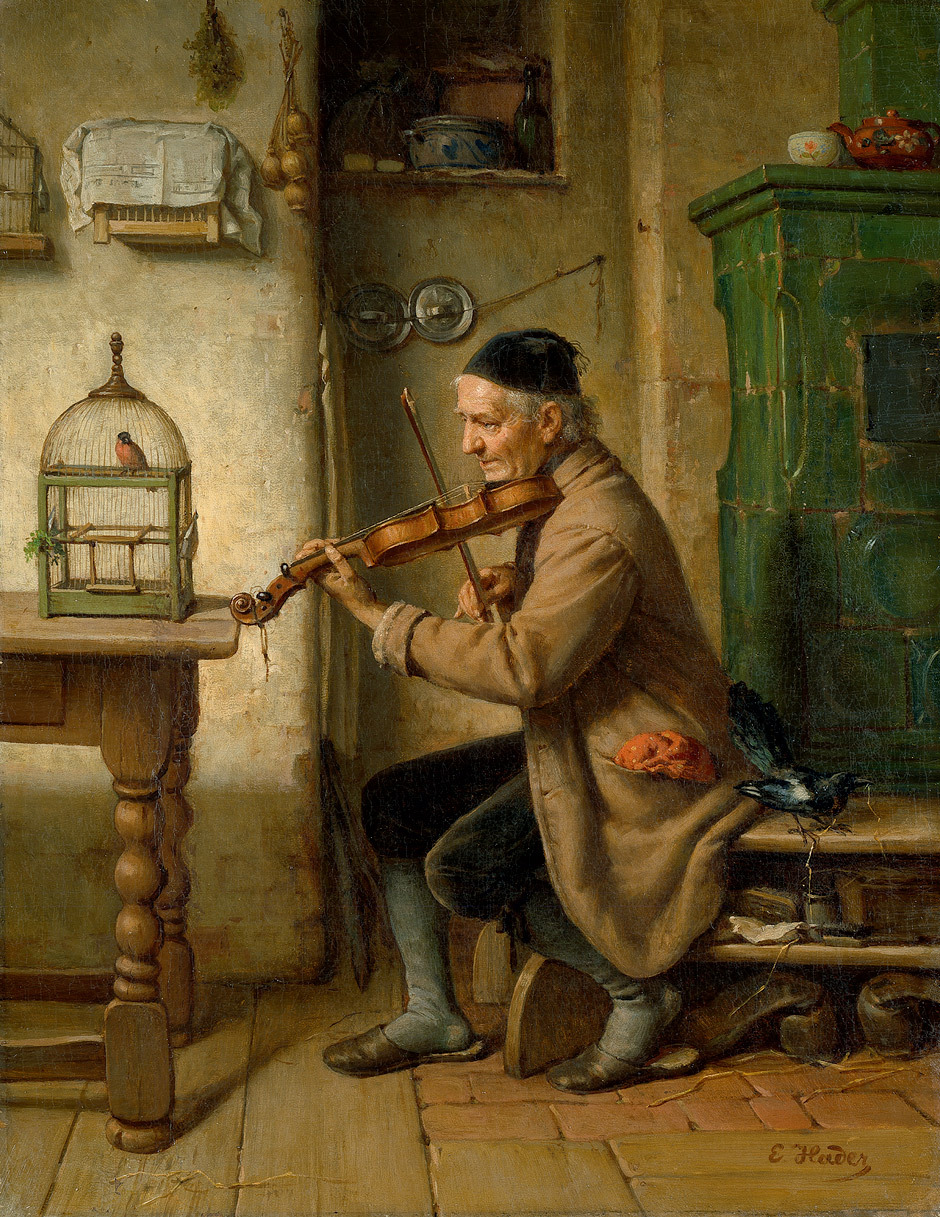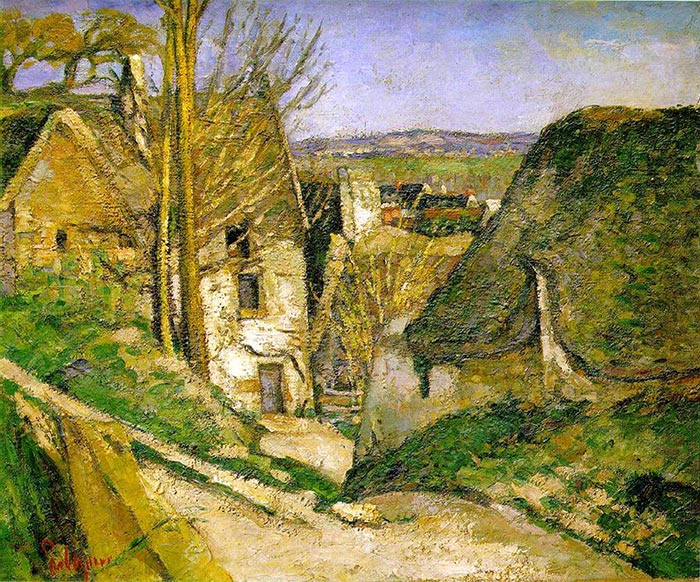The Girl with a pearl earring (meisje met de parel) is an oil on canvas by Dutch Golden Age painter Johannes Vermeer in 1665. This work of art has been in the collection of the Mauritshuis in The Hague since 1902 and has been the subject of various literary as well cinematic treatments. Girl with a pearl earring is not a portrait but a ‘tronie’ – a painting of an imaginary figure. In Dutch, it means the head of an ideal “type,” like “a soldier” or “a musician” – or in this case, “a young beauty.” The painting depicts a European girl wearing an exotic dress, an oriental turban, and the famous eye-catching pearl earring. Girl with a pearl earring portrays a young woman in a dark, shallow space, an intimate setting that exclusively draws the viewer’s attention to her. In this painting, the girl wears a blue and gold turban, a titular pearl earring, and a gold jacket beneath with a visible white collar. Caught in a fugitive moment, she turns her head over her shoulder, meeting the viewer’s gaze with her eyes wide and lips parted as if about to speak. Her enigmatic expression and the mystery of her identity are what intrigues the painting more. The Girl with a Pearl Earring Title: The Girl with a pearl earring (meisje met de parel) Artist: Johannes Vermeer Year: 1665 Style: Baroque Genre: Portrait, tronie Dimension: 46.5 cm x 40 cm Location: Mauritshuis, The Hague, Netherlands Oil on canvas
Tag: artist
Interior with a reading woman
Interior With a Reading Woman Title: Interior with a reading woman Artist: Niels Holsøe (Danish, 1865 – 1928) Published: 1907 Origin: Danish Size: 54 cm x 46 cm (21.3 in x 18.1 in) Oil on canvas
Le Déjeuner sur l’Herbe by Édouard Manet
Short story about this remarkable panting by Manet Le Déjeuner sur l’Herbe (The Luncheon on the Grass) is a larger oil on canvas painting by French artist Édouard Manet created in 1862-1863. This unnerving and astounding composition bring in an entirely new painterly method – it contains the genres of portraiture, landscape and still life within a single painting. The large scale of the painting was generally reserve for religious, mythological, or historical subjects. The background of the painting was lacks depth, as if the piece was painted in a studio rather than outdoors – with the light is low and almost no shadows. Le Déjeuner sur l’Herbe (The Luncheon on the Grass) depicts a female nude and a scantily dressed female bather casually having a casual picnic with two fully and fashionably dressed men in a rural setting. In front of them is a basket of fruit and bread. The woman’s pale body is starkly lit as she stares directly at the viewer. The two men seem to be engaged in conversation, ignoring the woman. At that time, when pictorial art only allowed for the feminine nude to be depicted in connection with myths and allegories, Manet, himself, re-contextualizes the worn out and overdone subject matter. He refreshed the concept and idea of female nudity in art, specifically paintings. Despite all critics about this painting, Manet managed to bridge the gap between two majors of art movements: Realism and Impressionism. He also played an important role in the art scene of 19th century Europe. In return for his bravery and brilliant creative mind, Le Déjeuner sur l’Herbe has become one of Manet’s breakthroughs – and modern’s art’s most famous artworks. The painting can be viewed in Musée d’Orsay Museum, Paris.
Ernst Hader Paintings
Title: Der Wanderhänder Artist: Ernst Hader Published: 1869 Dimension: 70 x 53 cm Oil on canvas Title: Öffentliche Verlaudbarung Artist: Ernst Hader Published: 1922 Dimension: 50 x 39 cm Oil on canvas Title: Auf dem Korridor Artist: Ernst Hader Published: Before 1922 Dimension: 66 x 52 cm Oil on canvas
Ernst Hader Music for the bird
Impressionist by Paul Cézanne
The Hanged Man’s House The story behind the painting The Hanged Man’s House (The House of the Suicide) was painted by Paul Cézanne in a small town north of Paris, Auvers-sur-Oise. It illustrated his conversion to Impressionism as he used the pale colours and broken brush strokes to this painting. Gone are the dark colours, this painting shows a different characters from his earlier works. The painting also shows a change in subject matter, such as his chosen theme as well as the techniques. Despite his debbling in the world of Impressionism, he put some unique touches that set his paintings apart from other artists. It is shown in the complexity of the composition along with it’s characteristics. There is no single strong focal point, instead several paths moved in different directions, encouraging the viewers eye to follow it’s path when one looks at the painting. The painting depicts a picturesque cottage situated in Auvers near the Rue de Four. It also depicts a landscape devoid of human presence, an abandoned and isolated place, with cracked walls. The branches of the trees and starkly angling off to the top, depict a sense of confusion. The brush strokes are broken. It is thicker than the standard, showing an overall impression of having been plastered with paint. The lack of people, the village, the stiff, and the cool colours in the painting seems utterly deserted – perhaps creates a strong sense of solitude. The Hanged Man’s House was exhibited at the First Impressionist Exhibition which is held in 1874, a year after the painting was created. Today, it is on display in Paris at the Musée d’Orsay, Paris, France, alongside with Cézanne’s other great artworks. Title: The Hanged Man’s House Artist: Paul Cézanne Date: 1873 Style: Impressionism Period: Impressionist period Genre: Landscape Oil on Canvas
